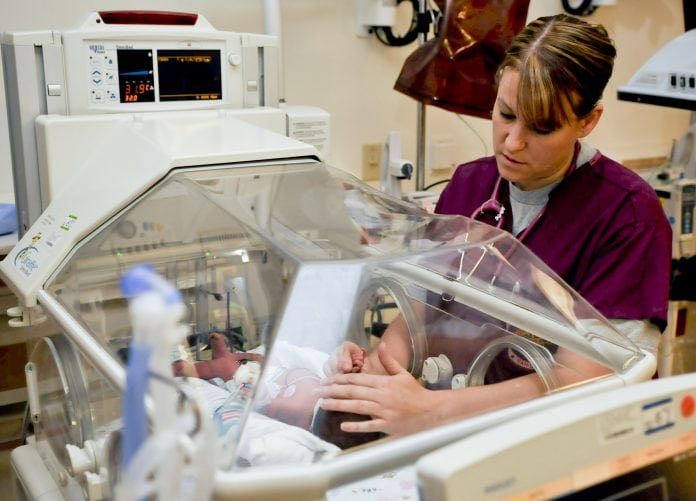
Variations in the practice of airway management in intensive care units across the UK are putting children and particularly newborn babies at risk.
This is the finding of a new survey led by doctors at the Royal United Hospitals Bath NHS Foundation Trust, UK, who interviewed staff from all of the UK’s paediatric care units (PICUs) and 90% of the neonatal intensive care units (NICUs).
Its results reveal that lessons from the landmark NAP4 study in 2011 have not been put into practice in all PICUs or NICUs.
In fact, most respondents (98% of NICUs and 75% of PICUs) reported that they were unaware of NAP4, which was committed to investigating major complications of airway management (establishing and maintaining a patient on a ventilator).
What were the results of the NAP4 study?
Led by the Royal College of Anaesthetists and the Difficult Airway Society, NAP4 found that the absence of capnography, a simple method of monitoring breathing, contributed to 74% of deaths from these events.
Its authors therefore recommended universal use of capnography in ICUs together with changes in policy, equipment provision and training to improve airway safety.
As a result, capnography is now being used in almost 100% of adult ICUs. But according to the PIC-NIC survey, it is only available in 47% of NICUs, and it is rarely used.
What did the PIC-NIC survey find?
The survey also revealed:
- 78% of PICUs and 34% of NICUs do not formally identify patients with a difficult airway at staff handover
- Only 40% of NICUs and 67% of PICUs have protocols in place for high risk patients compared to 90% of adult ICUs and
- Of the 129 NICUs and 27 PICUs who responded to the survey, 34 of the former and five of the latter reported death or serious harm in their unit as a result of complications of airway management in the last five years.
How should intensive care units respond?
Report author Dr Fiona Kelly, a consultant in anaesthesia and intensive care medicine at the Royal United Hospitals Bath NHS Foundation Trust, said: “The findings of this survey indicate that the NAP4 recommendations have been adopted into routine practice by many paediatric intensive care units, but into only a small number of neonatal intensive care units.
“There are many differences between adult, paediatric and especially neonatal practice, but monitoring the breathing of a patient who is dependent on a ventilator is fundamental to safe practice in any ICU.
“Capnography, which detects exhaled carbon dioxide breath by breath, is a simple tool and can detect misplaced tubes or disconnections from a ventilator. It is of concern that this technology is only used in a few NICUs. This variation in practice, which is potentially putting lives at risk, merits further investigation.”
Fellow report author Professor Tim Cook, also a consultant in anaesthesia and intensive care medicine at the Royal United Hospital Bath NHS Foundation Trust, recommended that the lessons learned in adult ICUs are shared with NICUs and PICUs.
He added: “The current situation of half of UK NICUs using capnography and it not being available in the other half needs addressing.”
The PIC-NIC survey has been published in the journal Anaesthesia.

























